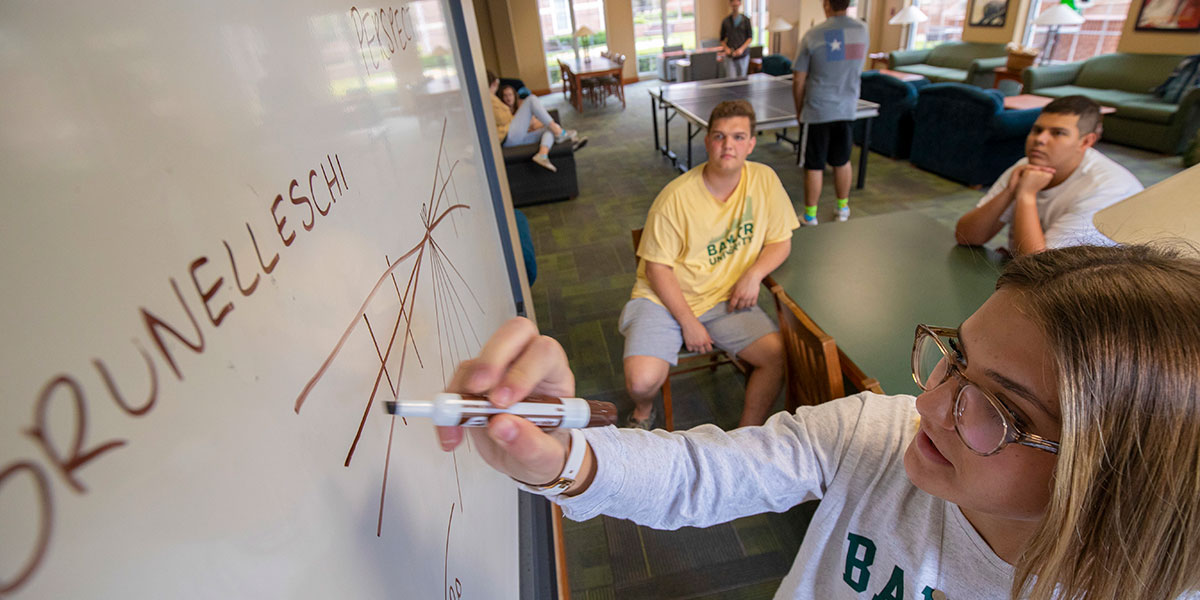Baylor climbs into U.S. News’ top 10 for best ‘learning communities’

Baylor students living on campus have a variety of options. Some choose to live with other students their age; others, with students who have similar academic or extracurricular interests; still others, in faculty-led residential colleges.
Baylor takes these opportunities seriously, and it shows. U.S. News recently recognized Baylor’s learning communities among the top 10 in the nation — just behind schools like Yale, Michigan and Princeton, and ahead of, well, just about everyone else. (The honor ranked Baylor No. 1 in the Big 12, No. 1 among large private universities, No. 2 in Texas and No. 2 among Christian universities.)
“[Our goal] is to help students be as successful as possible and really feel welcome within our residential communities,” Dr. Rob Engblom, Baylor’s associate director for resident learning, told the Lariat.
First-Year Communities are your traditional freshman residence halls (such as Collins and Penland), allowing first-year students the opportunity to live with other first-year students who have different interests and majors. Upper-Division Community (at University Parks) offers something similar, but with the amenities of apartment living.
Living-Learning Communities (LLCs) are organized around specific academic programs or extracurricular interests, such as the Science & Health LLC in Earle Hall or the Business & Innovation LLC in Brooks Flats. Students of all classifications live among other students with similar interests or degree plans, sharing special programs and classes together.
Residential Colleges are faculty-led communities that foster academic excellence through intensive faculty-student interaction, such as the Honors Residential College in Alexander and Memorial. Students of all classifications live in Baylor’s Residential Colleges, enjoying a special sense of community through events and activities that help students connect with each other and faculty/staff.
In addition to the hall director and community leaders, every Baylor residence hall has its own faculty-in-residence (a professor who lives in the hall right alongside the students) and resident chaplain (a Truett Seminary student who lives on-site to provide spiritual care) to help guide and serve the students who live there.
It’s rare to find such community in a school Baylor’s size. Most of the other schools in U.S. News‘ top 25 are either much larger (such as flagship state schools, with massive resources to support such programs) or much smaller (roughly a third of the top 25 had undergraduate populations of 5,000 or less, which naturally lends itself to a tighter community). Only three other schools of Baylor’s size (between 10,000-20,000 undergraduates) made the top 25, and BU was the only faith-based institution in that group — speaking again to Baylor’s distinct place in the world of higher ed.
Combine that with Baylor’s top-five recognition for “first-year experience” and its rare top-25 ranking for both undergraduate teaching and research, and you can see why so many find BU to be such a special place.
Sic ’em, Bears!

